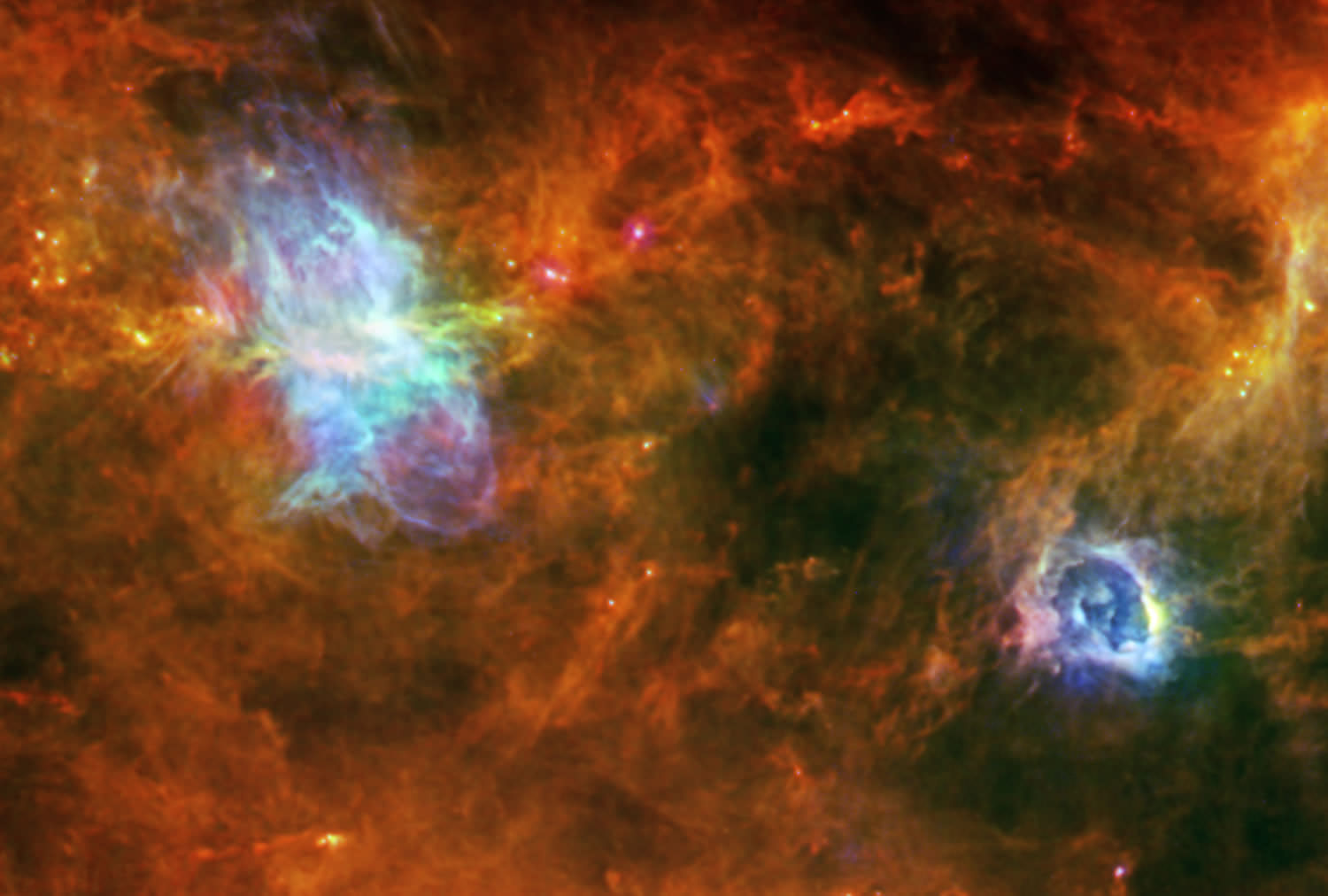In a star-making nebula awash in a tangled nest of gas and glowing filaments, scientists have uncovered an interesting, previously unseen interplay between gravity and turbulence that affects the formation of stars.
This image, taken by the European Space Agency’s Herschel Space Observatory, shows the highly detailed structure of cool wispy filaments of the Vela C molecular cloud. Located just 2,300 light-years from Earth, Vela-C is a vast star-making complex of gas and dust. And within this glowing cloud, both high-mass stars and smaller Sun-like stars form through very different processes.
Gravitational attraction pulls gas and dust together to form massive clumps of matter in glowing ridges. According to scientists studying the image, the most massive and brightest stars will form within these clumps. Random motion and turbulence throughout the cloud appear to create the fine nest-like filaments. It’s within these areas that smaller stars will form. Tiny, white specks fleck the image. These white dots, more abundant in the ridge-like filaments, are pre-stellar cores; compact clumps of gas and dust that might ignite into new stars.
Vela-C’s proximity to Earth makes it an ideal laboratory to study the birth of different kinds of stars. The nebula may also make it a perfect study of supernovae. The blue areas in the image contain expanding pockets of hot gas energized by the strong solar wind and ultraviolet radiation of young and massive stars. Compared to our Sun’s expected 10 billion year life-span, these massive stars burn through their supply of nuclear fuel within just a few million years. At the end of their lives, these stars will explode in dazzling supernovae.
The Herschel Telescope, launched in 2009, explores the Universe in the far infrared. While interstellar dust is cold, it shines brightly against the even colder surrounding space. The longest wavelengths of light show up as the red filaments in this image. Shorter, signifying hotter, wavelengths of light show up as yellow, green and blue.
Image Caption: The Vela-C molecular cloud region observed in far-infrared wavelengths. Credit: ESA/PACS/SPIRE/Tracey Hill & Frédérique Motte, Laboratoire AIM Paris-Saclay, CEA/Irfu – CNRS/INSU – Univ. Paris Diderot, France


Imagery like this is awesome.
“We live in a wonderful world that is full of beauty,
charm and adventure. There is no end to the adventures that we can have
if only we seek them with our eyes open.”.
I’d love to be able to somehow fast forward it and see actual stars forming and dying.
How does gravity create parallel linear structures?
? I can’t see such.
The filaments here were apparently created by gravity and turbulence both. A first order (handwaving) description would be that turbulence creates volumes of different density, gravity stretches volumes of different density. Both processes gets complex fast, so there is little to say outside of the studies. (How do you describe a playground?)